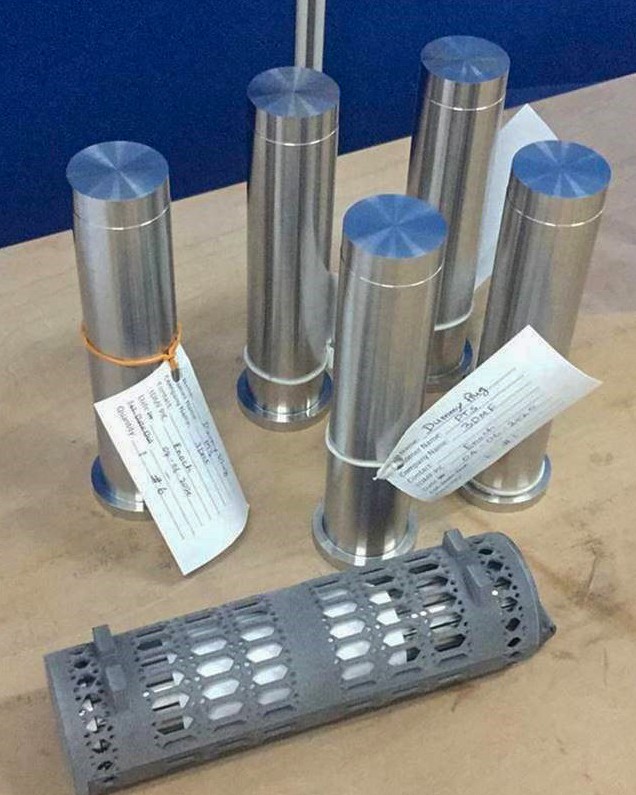How would you describe your first experiences of additive manufacturing? For some users, the feeling is similar to the one you have when you unpack a Christmas present. For others, it’s the uncertainty in getting into the “unknown” or even the certainty of having a magical tool but the frustration of not knowing how to use it properly.
For ConocoPhillips, Alaska’s largest crude oil producer and largest owner of exploration leases, it’s probably a mix of the Christmas feeling and the certainty of having a magical tool in-house.
To remedy a supply chain issue, Alaska business unit teams — in collaboration with ConocoPhillips’ Global Production experts — have been testing 3D printed burner plugs in its Ruston gas turbines at Kuparuk.
For those who do not know, burner plugs are consumable parts, found within ConocoPhillips’ original gas turbines at Kuparuk (a 40-year-old field), and which aren’t manufactured anymore.
The team 3D printed the plugs using Inconel 718, a high-strength superalloy with a nickel-chrome base material resistant to high pressure and extreme temperatures. In the case of these outdated burner plugs, which are no longer covered by intellectual property laws, it’s possible to go from a set of drawings to a printed object in about a week and then have it shipped to the field location, they explain in a press report.
“So, you’re taking something that would traditionally be a 30-week thing down to a two-to-three-week thing,” said Curt Andersen, an Instrument, Control and Electrical Engineering Supervisor for the Alaska business unit. “And so far, the printed plugs are working fantastic. They’re performing as good, if not better, than our conventionally made plugs.
And thereafter come the questions surrounding the use of AM:
“This was an opportunity for us to trial something that had a lot of potential advantages to it, and also use this as data for the rest of the company. For us, this is a new method of manufacturing that comes with a lot of questions, such as what does the part look like when we put it in service? How does it act? Does it act like another piece of metal that was rolled, forged or cast?”
And sometimes, when you do not have the right responses at the moment you asked these questions, you start working with a partner who bring much more experience.
That’s anyway what ConocoPhillips teams did as they also partnered with an original equipment manufacturer (OEM) and additive manufacturers for the production of 3D printed choke cage valves, flow control devices used in water injection wells.
As part of this project, the Alaska team identified numerous choke valves obsoleted by the OEM. They said the solution consists in retrofiting the existing valve bodies with 3D printed valve cages made of Inconel 718.
“We’ll be able to extend the life of the choke valves using an optimized design,” Andersen said, “replacing parts only when we need them. With additive manufacturing, you don’t have to go out and buy a whole new valve, plug or whatever the piece.”
These 3D printing trials, he said, exemplify the Alaska business unit’s continual search for innovative, cost-effective ways to maintain and optimize its operations.
“For an operation like the North Slope of Alaska, because we are so remote, and because it can take such a long time for things to get there, we maintain a fairly large warehouse of parts, especially the ones that we consider critical. That comes with a lot of extra costs. There’s the cost just to simply store them and have the space for them but there’s the ad valorem tax that we have to pay for just having that on the shelf.”
“So, in an utopian future view, if you have these parts in a digital format, if you have the drawings and the design criteria for them, you could simply ship them to a partnered print shop, produce them and have them in a much quicker fashion than worrying about do I need to order this thing 30 weeks out in order to have it on the shelf in time to do this maintenance activity. So, you could create a lot more certainty within the supply chain itself and also potentially significantly reduce costs in terms of warehousing and inventory”, the team concludes.
Remember, you can post job opportunities in the AM Industry on 3D ADEPT Media free of charge or look for a job via our job board. Make sure to follow us on our social networks and subscribe to our weekly newsletter : Facebook, Twitter, LinkedIn & Instagram ! If you want to be featured in the next issue of our digital magazine or if you hear a story that needs to be heard, make sure you send it to contact@3dadept.com






